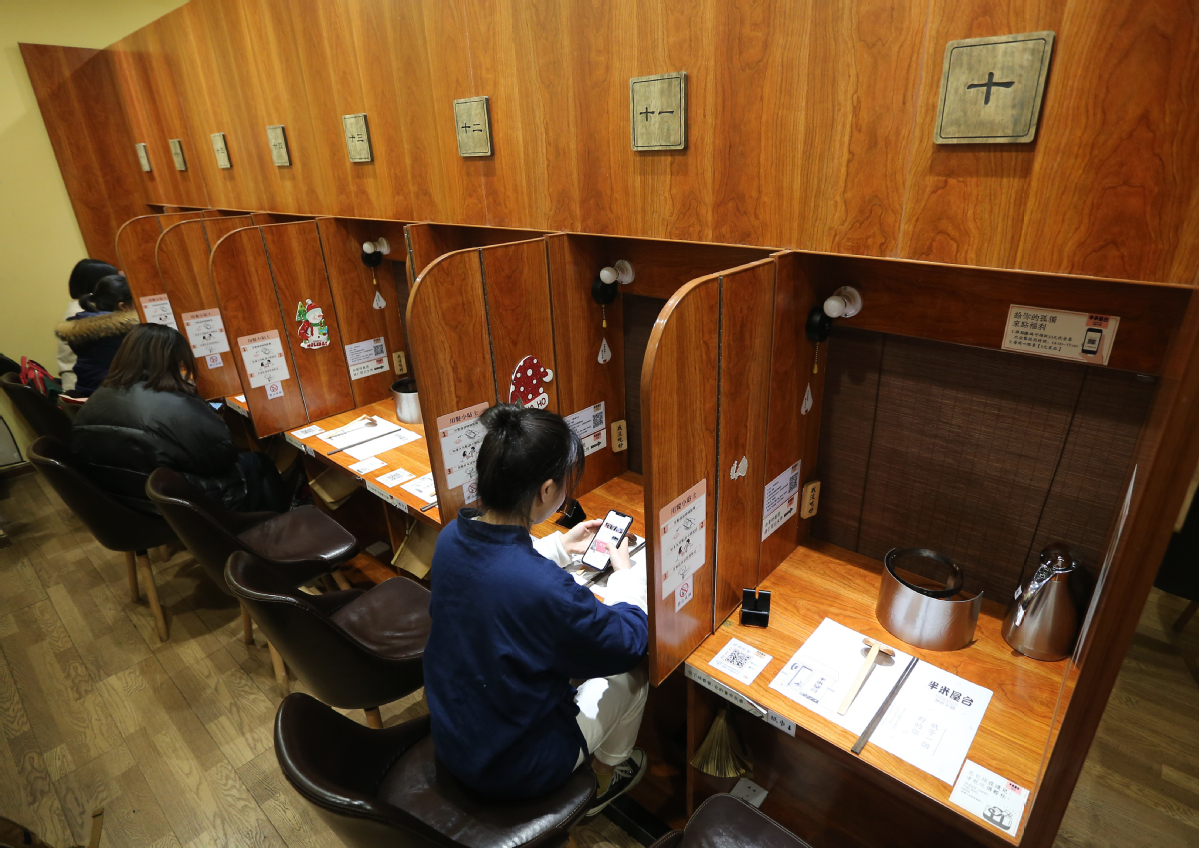Clean Plate 2.0 campaign gaining foothold in eateries


Delivery firms jumping on bandwagon with smaller portions and free transport
A niche market for meals provided in smaller dishes and individual servings in restaurants is growing in China as more consumers pursue cleaner, more convenient and safer dining experiences.
Such a trend has become more prominent since the outbreak of the COVID-19 pandemic, as eating separately can reduce the risk of viral transmission. Traditionally for Chinese cuisines, diners usually order a variety of different dishes and share them all together.
The sudden outbreak of the contagion forced many restaurants to temporarily close. Since late March, most catering firms began resuming operations, and more restaurants have been prioritizing the prevention of cross-infection while dining.
"The model of eating separately and dining environments that are friendly for solo diners have drawn more attention. They can effectively reduce contact and the possibility of infection, and they are expected to become new prominent trends with promising prospects even after the pandemic is over," said Zhao Wenbo of LeadLeo Research Institute.
In a recent speech announcing the Clean Plate 2.0 campaign, President Xi Jinping emphasized China's commitment to drastically reducing food wastage. It turned public focus toward food security in China-the world's largest food consumer.
Some fear that the COVID-19 pandemic and floods across southern China might reduce food production and supply, and there is an urgent need to tackle food loss and waste.
A large number of restaurant associations nationwide have proposed initiatives to reduce food wastage. They encouraged restaurants to launch more options such as half-portion dishes and small-portion offerings.
The associations also encouraged restaurants to remind customers to order rationally and avoid letting their eyes be bigger than their stomachs. Restaurants should also actively offer packages and doggy bag services after meals when food is unfinished.
"To keep up with the pace of the government's proposal, most restaurants plan to take some measures to reduce food waste, but the business capacity of restaurants differs greatly. Some can gradually try to develop smaller portions, set meals and takeout packages assuming that they can stay profitable," Zhao said.
"If restaurants provided more choices of orders and individual servings, they can better cater to consumers' diversified demands such as the pursuit of hygiene and convenience, and diners can also try more dishes at one time and develop a healthy diet lifestyle," he added.
Meanwhile, China has more than 260 million adult singles, according to data from the Ministry of Civil Affairs, and even more office employees. These two huge demographics have laid a solid foundation for the business growth of solo dining.
With the fast pace of work and life, eating alone is common for office employees on workdays, especially during busy lunchtime periods. Restaurants that can provide solo-diner-friendly seating arrangements and comfortable dining settings have been sought after by those who frequently dine alone.
"If seating arrangements are highly private for solo diners at hotpot restaurants, I would love to go there and eat alone, as I won't get disturbed by others. I can even watch some TV dramas while eating," said Fan Yajing, a 30-year-old office employee in Beijing.
Despite solo dining arrangements offering cozy environments for diners and helping them avoid close contact with others, an individual table designed for one person can cost a restaurant more due to space considerations.
"Compared with scenarios of dining together with others, the overall proportion of solo diners is still relatively small. Restaurants can set aside 30 percent or less of their total tables as individual tables, and gradually add more such tables based on market demand," said Zhao of LeadLeo.
In fact, to satisfy such demand, many ramen, barbecue and hotpot restaurants in China have introduced solo-diner-friendly seating arrangements and set up different compartments for such customers.
A search for "restaurants for solo diners" on Meituan Dianping, a Chinese customer review app, produced results for more than 1,300 restaurants in Beijing, and they have tags of "solo-diner friendly" in the app.
Besides dining in, the food delivery segment also introduced smaller dishes in an effort to reduce food wastage.
Ele.me, one of China's major online food delivery services, recently introduced a "clear your plate" program on its app. It mainly promotes meals in small dishes and offers complimentary deliveries, thus encouraging consumers to save on food.
The company said it would help divert more customer flow to those restaurants that provide meals in smaller dishes and support them with sales. In this case, it can guide both enterprises and consumers to accept new consumption patterns.
"Restaurants can be more considerate by offering meals in smaller portions or in the form of combos for deliveries, and enable solo diners to try more varieties of dishes and avoid waste in their orders," said Neil Wang, president of consultancy Frost & Sullivan in China.




































